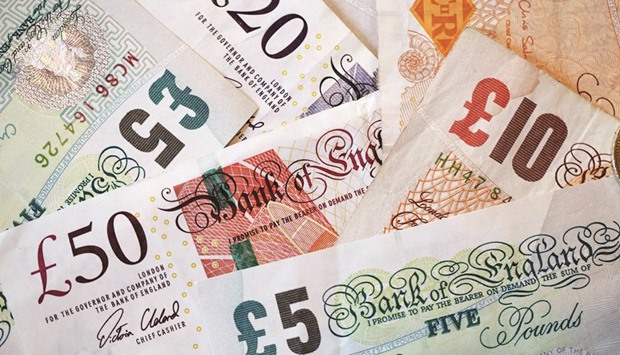The pound just had its worst day ever, and few analysts expect the UK currency to recover all of the losses that sent it to its lowest level since 1985 - at least, not in the foreseeable future.
BNP Paribas, one of the biggest sterling bulls before Britain voted to leave the European Union, cut its third-quarter forecast to $1.35, from $1.58. Had the pound ended the day lower on Friday, it would have been in line for a slide to $1.30 or even $1.25, according to Gain Capital Holdings’ Forex.com unit. Janus Capital Group, which oversees about $190bn, predicts a year-end level in the $1.20s.
Much will depend on the Bank of England, and whether it cuts interest rates, which may help the economy but undermine the pound. Sterling’s reaction to the Brexit vote was so extreme because few in the market anticipated it. And with no established road map for a member state to quit the EU, coupled with Prime Minister David Cameron’s resignation, there’s scope for further risk and volatility.
“The path of least resistance is to the downside for the pound,” said London-based Forex.com analyst Fawad Razaqzada. “Obviously, this has shocked everyone. What’s going to happen in the UK? The PM just resigned. There’ll be lots of changes - the BoE might step in.”
The pound declined 8.1% to $1.3679 in New York on Friday, the biggest decline on record, and dropped as low as $1.3229. Had it ended on Friday below $1.35, it would have paved the way for a slide to $1.25-$1.30, Razaqzada said.
One-month anticipated pound-dollar volatility jumped to a record 32.1%, data compiled by Bloomberg show. It swung in a wider range the day after the Brexit vote than in the whole of last year.
The pound had climbed to a high for this year of $1.5018 soon after voting ended, before plunging as early results indicated the “Leave” camp was performing better than predicted.
In the end, a 52% majority rejected the government’s pro-EU campaign. The last polls as Britons went to the voting booths suggested national opinion was split roughly down the middle. Betting shops were further off the mark, giving a 90% chance of a “Remain” result as the campaign drew to a close.
“Unfortunately for the pound, we don’t think the worst is over yet,” Steven Saywell, global head of foreign-exchange strategy at BNP Paribas, said in a Bloomberg Television interview. “Like we are, most clients were also surprised by this - this was not the base-case scenario. As we go into next week, I think the market will take stock.”
Saywell’s earlier third-quarter forecast of $1.58 made him more optimistic than all but three of 58 strategists surveyed by Bloomberg before the referendum.
HSBC Holdings, Europe’s biggest bank, lowered its outlook, predicting declines to $1.25 by September 30 and $1.20 by year-end.
Options imply the pound has about a 13% chance of either dropping below $1.25 or rising above $1.48 by the end of the third quarter, data compiled by Bloomberg show.
BoE Governor Mark Carney already said officials will take any steps needed to secure stability after the Brexit vote, and futures suggest a 40% chance of a rate cut as soon next month, from 11% on Thursday.
While such measures could help stave off the economic catastrophe that Cameron and others on the “Remain” side warned about during the campaign, they’d increase the money supply and may hurt sterling further. The world’s fifth-biggest economy is projected to expand 1.8% this year, down from 2.3% in 2015, according to a Bloomberg survey of economists.
S&P Global Ratings said Friday it was preparing to cut the UK’s top credit grade.
After the results of the referendum became clear, Cameron announced that he’d step down within three months, and that the process of leaving the EU would start under a new prime minister. Exiting the bloc is likely to take about two years.

The pound declined 8.1% to $1.3679 in New York on Friday, the biggest decline on record, and dropped as low as $1.3229


